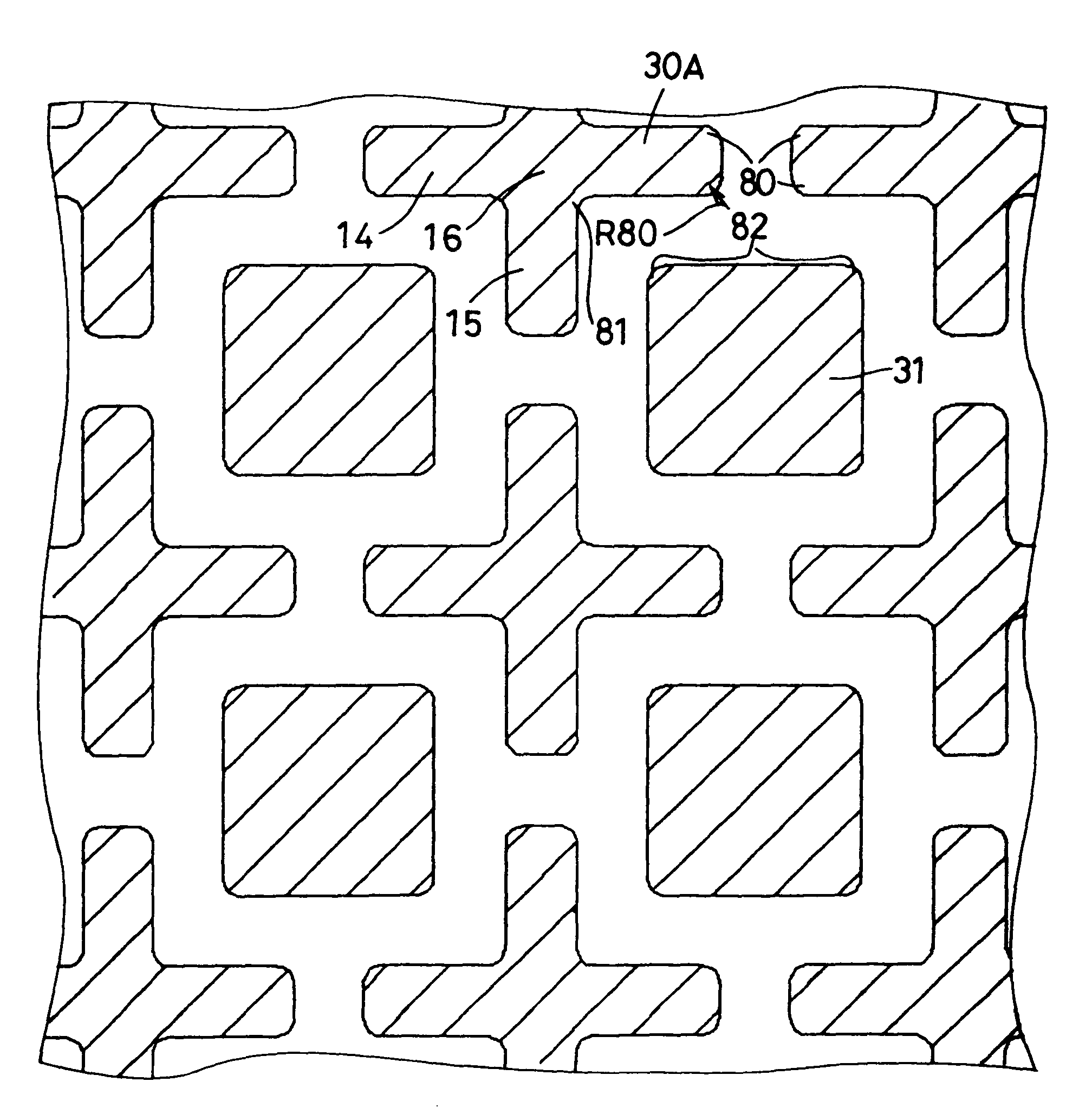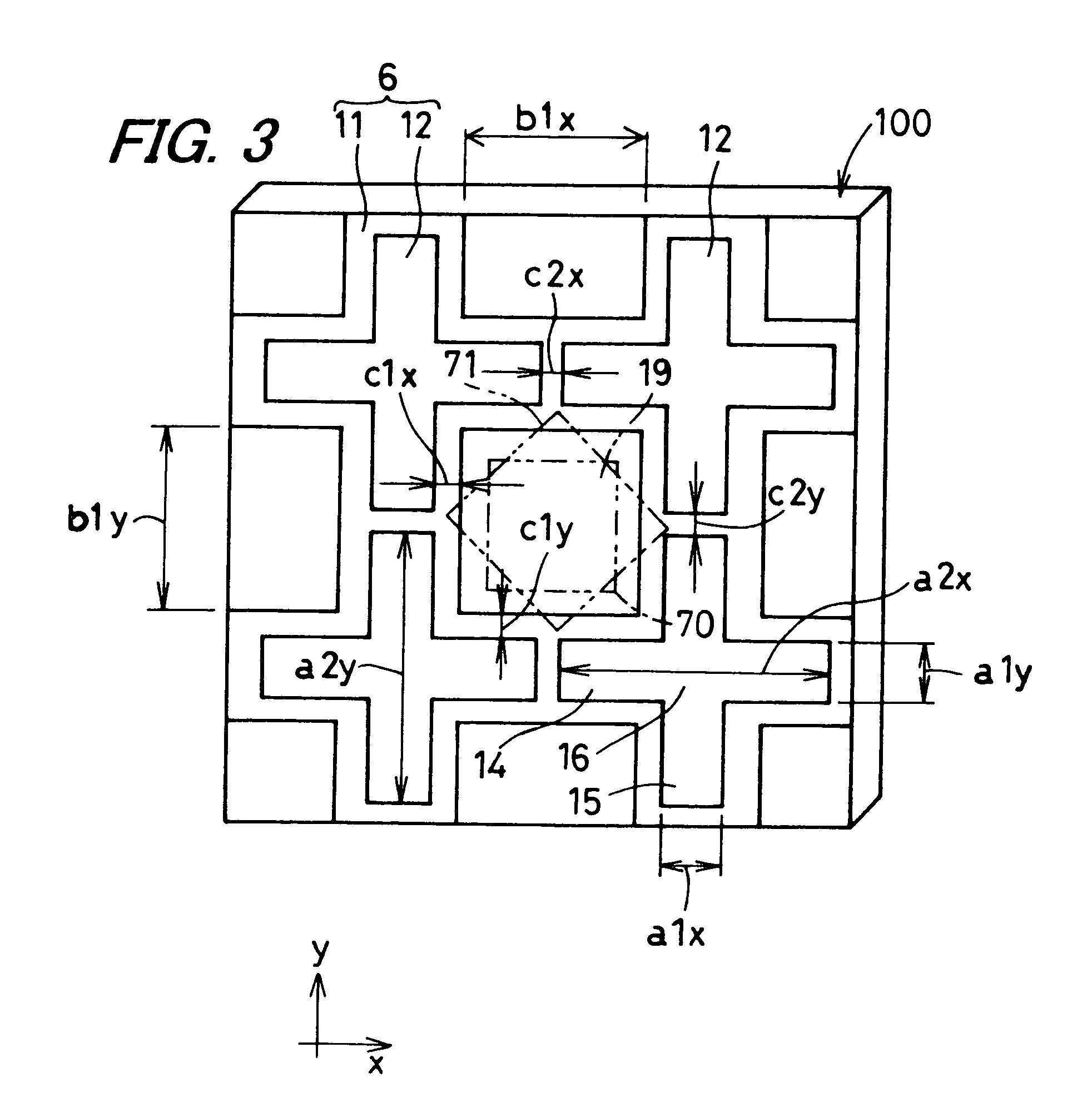Electromagnetic wave absorber
a technology of electromagnetic waves and absorbers, applied in waveguides, screening rooms/chambers, and antennas, etc., can solve the problems of lowering the transmission speed between equipment using wireless technologies, deteriorating ber (bit error rate), and affecting the absorption efficiency of electromagnetic waves
- Summary
- Abstract
- Description
- Claims
- Application Information
AI Technical Summary
Benefits of technology
Problems solved by technology
Method used
Image
Examples
example 1
[0130]The electromagnetic wave reflecting plate 2 is an aluminum-evaporated polyethylene terephthalate (PET) film, for example. As the second loss material layer 3, a polyethylene resin foam is used, in which the complex relative dielectric constant (real part) ∈ is 1.25 (2.4 GHz) and the thickness is 1.5 mm. As the first loss material layer 5, 100 parts by weight of chloroprene rubber, 8 parts by weight of Ketjenblack EC (product name, produced by LION AKZO CO., LTD.) as a dielectric loss material, and 100 parts by weight of powder of ferrite (product name: KNS-415, produced by TODA KOGYO CORP.) as a magnetic loss material are kneaded, and then vulcanized and molded into a sheet (thickness: 1 mm).
[0131]At that time, the complex relative dielectric constant and the complex relative permeability of the vulcanized rubber sheet were measured by a coaxial cylinder method (S-parameter method). Considering the results thereof and lamination conditions of the electromagnetic wave absorber ...
example 2
[0140]In the configuration of Example 2, the first conductor element layer 6 in which the shape of conductor elements is the same as that in Example 1 is used, and the second conductor element layer 4 is not used. FIG. 17 is a graph showing the results obtained with the configuration without the second conductor element layer 4. The first loss material layer 5 is constituted by two layers, including the layer closer to the first conductor element layer 6 that is 0.5 mm of PVC (vinyl chloride resin) to which ferrite and carbon black have been added, and 2 mm of PET to which ferrite has not been added, and the electromagnetic wave absorber 1 with a total thickness of 2.5 mm is thus configured. In the PVC layer, the dielectric constant is 16 in the real part and 3 in the imaginary part (2.4 GHz), and the permeability is 1.43 in the real part and 0.5 in the imaginary part (2.4 GHz). In the PET, the dielectric constant is 3.1 (2.4 GHz), and the permeability is 1 in the real part and 0 in...
example 3
[0143]In the configuration of Example 3, the first conductor element layer 6 in which the shape of conductor elements is the same as that in Example 1 is used, and the second conductor element layer 4 is not used. FIG. 18 is a graph showing the results obtained with the configuration without the second conductor element layer 4. The first loss material layer 5 is constituted by two layers, including the layer closer to the first conductor element layer 6 that is 0.5 mm of PVC (vinyl chloride resin) to which ferrite and carbon black have been added, and 1 mm of PVC to which ferrite has not been added, and the electromagnetic wave absorber 1 with a total thickness of 1.5 mm is thus configured. In the PVC layer, the dielectric constant is 16 in the real part and 3 in the imaginary part (2.4 GHz), and the permeability is 1 in the real part and 0 in the imaginary part (2.4 GHz). In the PET, the dielectric constant is 3.1 (2.4 GHz), and the permeability is 1 in the real part and 0 in the ...
PUM
 Login to View More
Login to View More Abstract
Description
Claims
Application Information
 Login to View More
Login to View More - R&D
- Intellectual Property
- Life Sciences
- Materials
- Tech Scout
- Unparalleled Data Quality
- Higher Quality Content
- 60% Fewer Hallucinations
Browse by: Latest US Patents, China's latest patents, Technical Efficacy Thesaurus, Application Domain, Technology Topic, Popular Technical Reports.
© 2025 PatSnap. All rights reserved.Legal|Privacy policy|Modern Slavery Act Transparency Statement|Sitemap|About US| Contact US: help@patsnap.com



